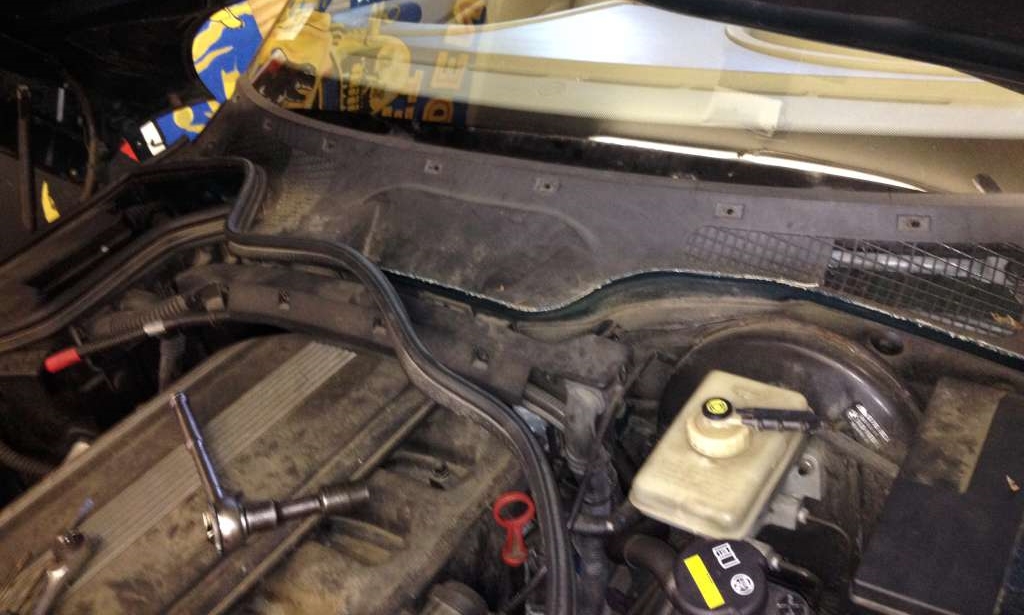 As I mentioned a few months ago, I sold my 2001 E46 325xiT wagon. After all, I was quite happy—no, in fact, blissful—alternating daily-driving the Z3 and the ’74 2002tii on my eight-mile commute to work at Bentley Publishers. Plus I still own the Suburban; if it’s a bad winter, I can use it and its four-wheel-drive. So I didn’t really need the wagon.
As I mentioned a few months ago, I sold my 2001 E46 325xiT wagon. After all, I was quite happy—no, in fact, blissful—alternating daily-driving the Z3 and the ’74 2002tii on my eight-mile commute to work at Bentley Publishers. Plus I still own the Suburban; if it’s a bad winter, I can use it and its four-wheel-drive. So I didn’t really need the wagon.
Of course, the ’Burb has gobs of miles, rust, a cracked exhaust manifold, and leaking intake-manifold gaskets, so it may die at any time. So really, what I’m trying to do is use the ’Burb and the Z3 to tag-team my way through the winter. Rather than wait for the first snowflake, I put the tii into storage last week; I plan to drive the Z3 as long as the weather holds, although I mounted the steelies and snows left over from the 318ti on it just in case
Unfortunately, just as the cold weather began, the Z3 developed an annoying little problem: The blower fan began only working on high.
This is a classic indication that the fan-speed resistor has gone bad. Initially, I thought, well, better dying on high than on low, right? I don’t even have to fix it, right? But having the fan be all or nothing quickly wore thin.
I read up on it and learned that the resistor is located inside the blower housing, which is accessible from under the hood. You don’t need to pull apart the console and root around under the dashboard—and the part is available for as low as $25. So I had at it.
It’s actually a very quick, easy, and satisfying repair. First you remove the wiper arms by undoing the nuts and pulling them off their splined shafts. If they’ve been on there awhile, you may need to use a puller. I found that a tie-rod puller works perfectly on the left wiper arm; on the right one, however, there’s not enough clearance to get the puller directly over the splined shaft, so I inserted a screwdriver between the puller and the top of the shaft and lifted up on the screwdriver

Next, remove all the little plastic clips holding on the plastic cowl cover. The clips have an inner and outer part; you lift the inner part up, pop it out, then lift the outer part out.



Then remove the rubber weather stripping around the edges of the cowl cover, and remove the cowl cover.


This exposes the front of the blower assembly.

If the cavity in front of the blower assembly, or the heater core inside it, is as gnarly as mine was—note the accumulation of leaves and acorns—you’ll never have a better chance to have at it with a vacuum and a nozzle attachment. It’s also a good opportunity to clean the bottom of the windshield that is normally overlapped by the cowl cover.
Now undo the plastic-snap straps holding on the cover of the blower assembly, and slide the cover out. You may need to break the thin ties holding the ends of the straps together to get the cover out. Go ahead and break them; the straps will still snap back together.


With the cover off, you can easily get at the resistor pack. It’s at the bottom center of the assembly, right below the middle of the fan motor. It’s easy to grab onto it and yank it out with a pair of needle-nosed Vise Grips.

You can try cleaning the contacts of the old resistor, both the external contacts and the ones that look like little tiny ignition points in the middle, and see if that fixes things, but, again, the new part is as cheap as $25.

Just pop the new resistor pack right in there, turn on the blower fan, and make sure it works before buttoning things up.

Then re-install the blower-assembly cover, the cowl cover, the plastic clips, and the wiper arms, and you’re done.
I love the feeling of accomplishment from doing big, complicated repairs, but these quick hit-and-run fixes that you can knock off in an hour are incredibly satisfying, too. And with the snows on and all four speeds of the fan working, hopefully I have forestalled the coming of winter—at least for a few more weeks.
(Next week: I begin the E30 timing-belt replacement. Maybe.)—Rob Siegel
Rob’s book Memoirs of a Hack Mechanic is available through Bentley Publishers, Amazon, and Bavarian Autosport—or you can get a personally inscribed copy through Rob’s website: www.robsiegel.com.









